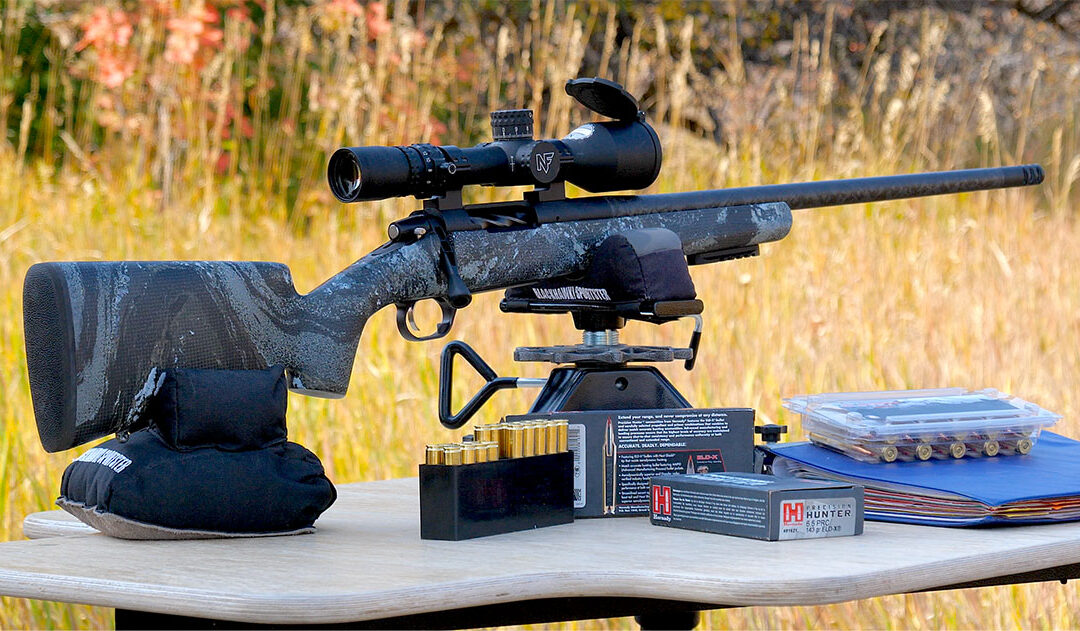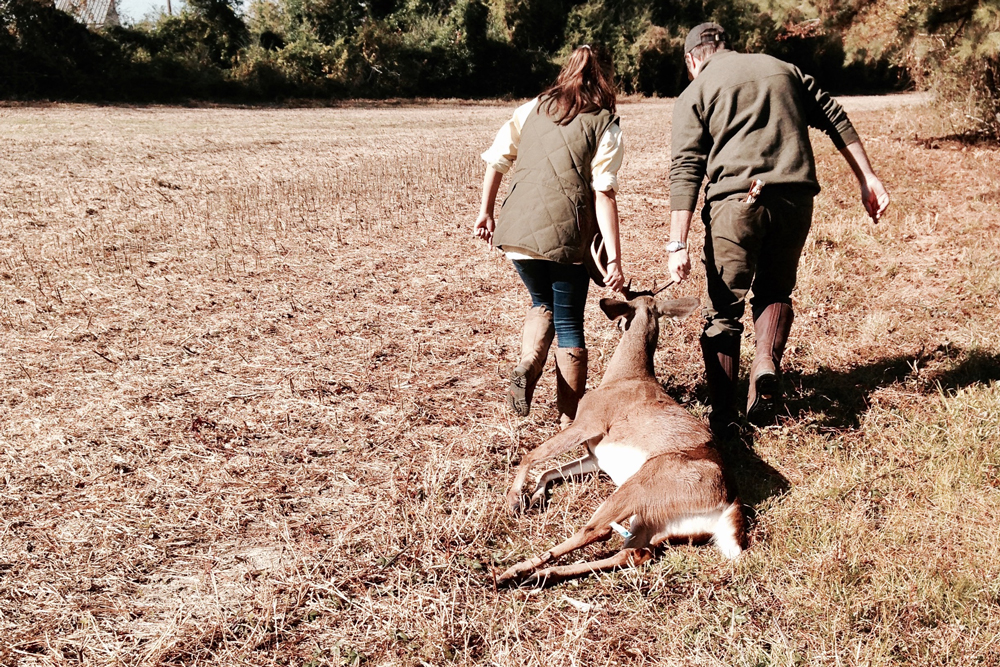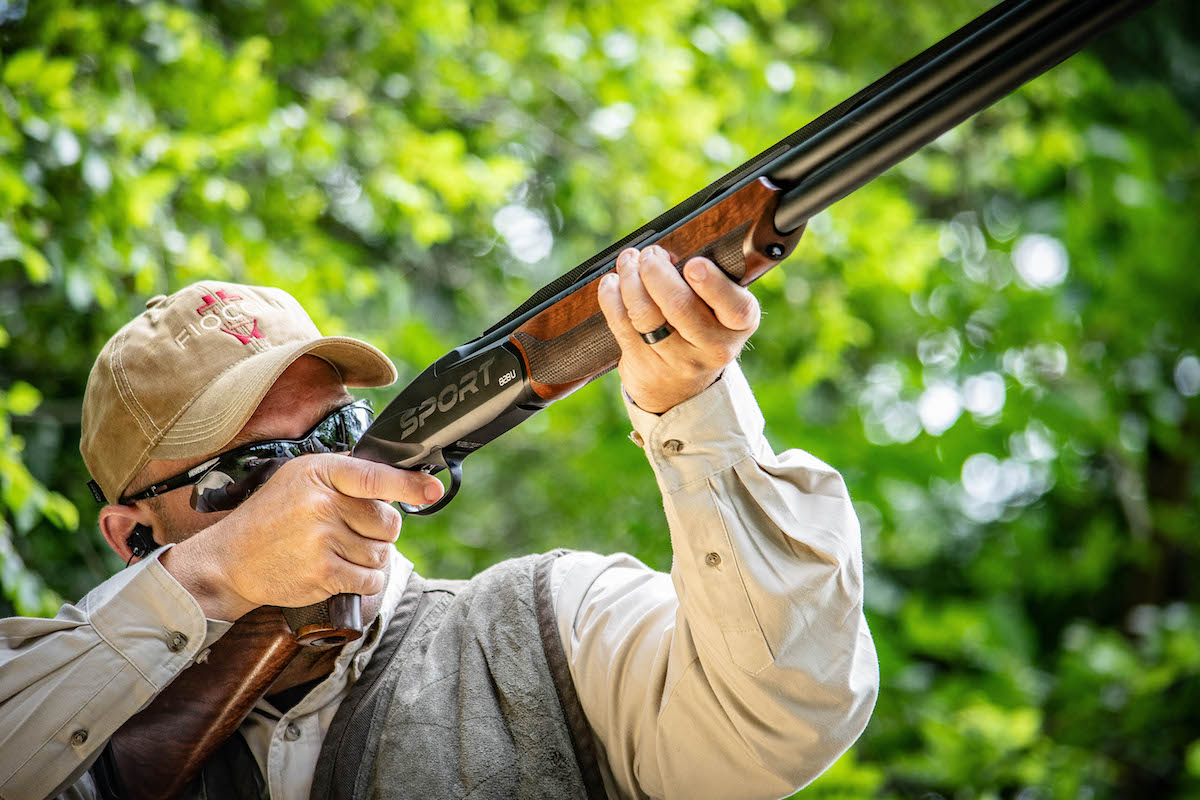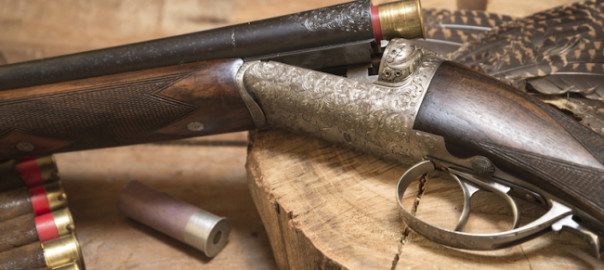Say what you will in praise of the newest chassis rifle from, oh, say Bergara. Or the strongest big bore lever-action from Bighorn Armory. Or the lightest bolt-action from Weatherby or Barrett. All might be fine, precise, rugged, accurate. Spectacular tools, the best of the best. They all have one thing in common: they are variations on a 19th century theme.
That’s right. Most of our modern rifles are built around basic actions created in the 19th century. Think John Moses Browning and lever-actions. Farquharson and falling block actions. Browning again for autoloaders and slide actions. And Paul Mauser for the née plus ultra in controlled-round-action turn bolts. All created before the 20th century.
From Savage’s rotary magazine to Mauser’s hinged floorplate, the mechanics and innovations were hammered out long ago. It seems no bolt-action can offer anything really new.
But the AllTerra dual-lug, push-feed bolt-action does. And it has patents to prove it.
Just how does anyone go about getting a patent on an action-style that’s already been built in dozens of variations? By incorporating a few tweaks that make it more inherently accurate.
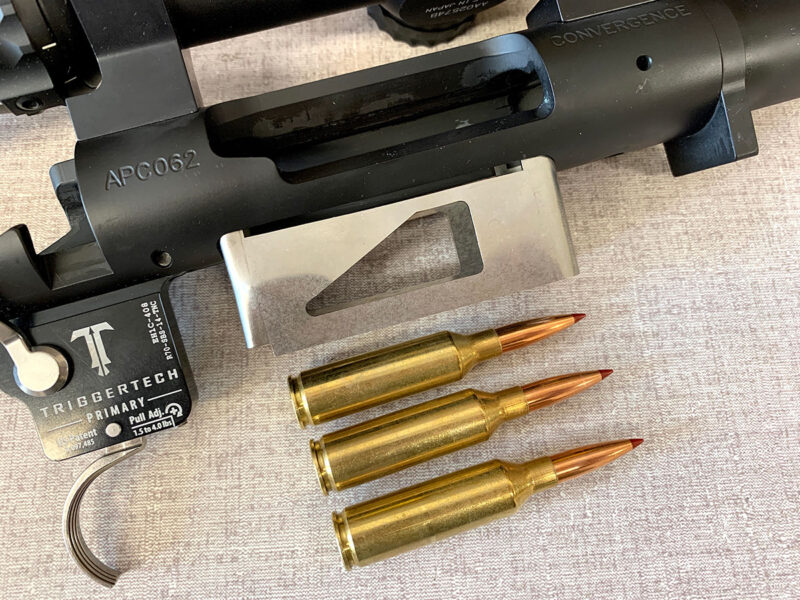
A one-piece, aluminum, hinged floorplate secures a 3-inch-long metal box magazine that holds three 6.5 PRC cartridges ready for action.
Accuracy, as most students of the rifle know, is spelled concentricity. In order for a bullet to fly straight it needs to be concentric to its center of mass. You can’t have the jacket thicker on one side than the other or an air bubble in the lead or the nose leaning to the side. That’s step one. Next you have to send that perfect bullet down a perfect bore, one that is dead straight with its lands and grooves equidistant from center and consistent the entire length. Cap that with a perfectly beveled and consistent muzzle crown so high pressure gases cannot exit sooner in one spot than any other.
Before we slap that perfect bullet on the butt and sent it on its way, we should back up to the chamber. It, too, has to be concentric to that perfect bore, its throat ramping up smoothly and evenly to the rifling. And the chamber must be secured by a bolt head that locks a perfectly balanced, concentric cartridge precisely in line with the bore.
Damn. We’re dancing with an inordinate degree of perfection and concentricity here. And that’s what the patented AllTerra action delivers. AllTerra engineers added at least four things to ensure a concentric lock up and launch of bullets through their perfect bores. Let’s prowl through an AllTerra Carbon rifle and see if we can identify them.
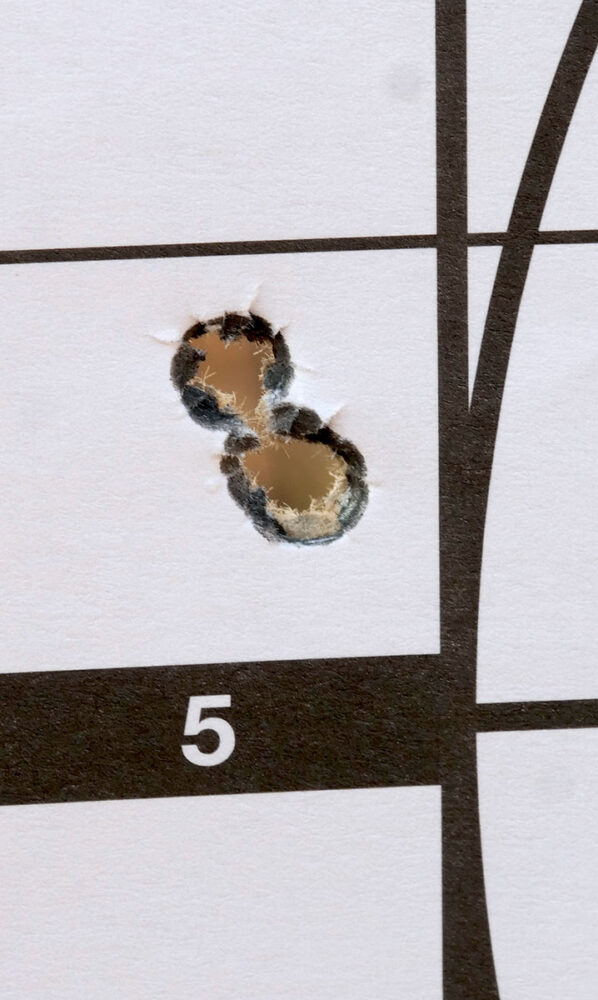
The provided AllTerra handloads with Hornady 143-grain ELD-X bullet resulted in a three-shot group that went 0.252-inch.
First, in keeping with concentricity, the action is round-bottomed with the oversized, tapered recoil lug integral. The front receiver ring is specially cut with two mortises into which the specially turned barrel tenons mate perfectly via 20-pitch threads. Within the barrel breach is the chamber drilled, bored and finish-reamed to 0.0001-inch tolerance to the axis of the bore.
The Proof barrel is wrapped in carbon for extra stiffness with minimal weight.
Backing up this precision barrel and action is a special bolt with what might be called “crowned” locking lugs precisely round on top to lock into specially cut locking recesses that center the bolt face with the bore. AllTerra refers to these as “conical lugs” and an elliptical raceway. They’re similar to Borden Bumps or a sleeved bolt. Not only do these lock perfectly squarely, but they self clean during cycling, the slightly oversized lugs riding the rails while any dirt, debris or carbon gets scraped and pushed onto the minimally undersized bolt body where broad spiral flutes stand ready to collect detritus.
Maintaining this self-cleaning and straight-line bolt lock up at the rear is a slightly oversized ring of the bolt body behind the integral handle. This centers the back of the bolt as precisely as the conical lugs center its front.
Yet, AllTerra’s not done. Within the bolt body stands an oversized firing pin body that is also fluted. Why? To reduce weight and lock time. Furthermore, the extra wide body closely fits the interior diameter of the firing spring coiled around it. Said spring, instead of flexing and snaking laterally to put inconsistent and unequal pressure on the pin, concentrates its tension on the forward drive. Augmenting this is the firing pin’s nose residing within its pilot hole at all times. More of that properly aligned, concentric stuff contributing to consistency.
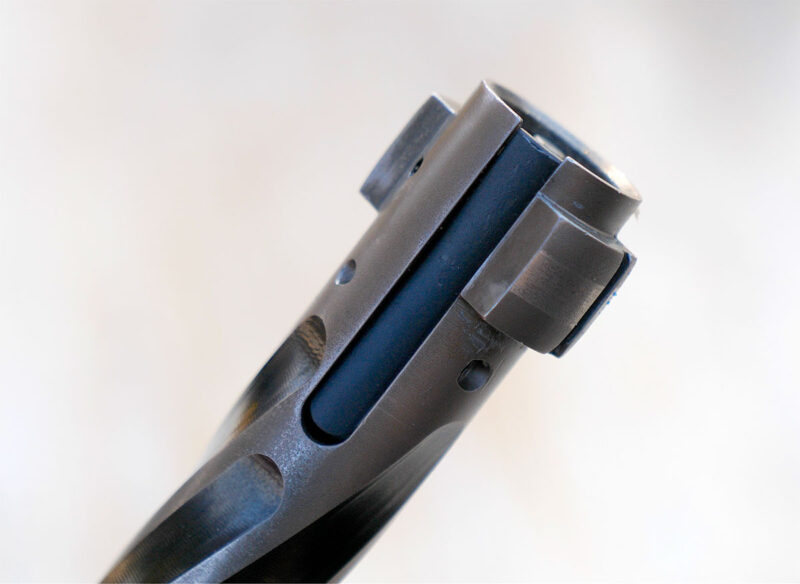
A special bolt has what might be called “crowned” locking lugs precisely round on top to lock into specially cut locking recesses that center the bolt face with the bore.
The upshot of all this is consistent, smooth, non-binding function and precision. And it’s all anchored via aluminum pillars to a six-layer carbon fiber stock with effective recoil-reducing lines. A one-piece, aluminum, hinged floorplate secures a 3-inch-long metal box magazine that holds three 6.5 PRC cartridges ready for action. Once chambered they can be ignited by 2.5-pounds of pressure on a crackling crisp TriggerTech Primary trigger.
All of this in the Carbon model with 24-inch floating barrel plus 1.5-inch muzzle brake weighs just 6 pounds, 5 ounces. Too little mass for the 6.5 PRC pushing a 143-grain bullet 2,990 fps? Not a bit. Yes, the muzzle brake moderates, but more impressive is the raised cheek piece that flows into a wide, rounded, negative comb that rises dramatically to a heel that actually perches higher than the barrel channel center line. This spreads the thin rubber butt pad across all of your shoulder pocket, not just the bottom half. A slightly tilted palm swell fills the hand for more control and cants it for better torque control. When the rifle bucks, it pushes the comb back and under your cheek rather than up and into it.
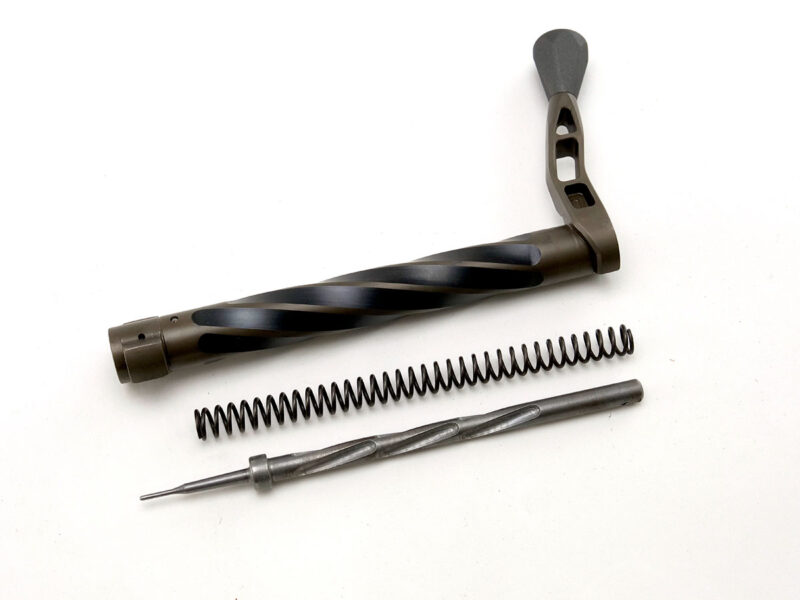
Within the bolt body stands an oversized firing pin body that is also fluted. Why? To reduce weight and lock time.
Depending on how much sound-deadening foam you elect in the stock, it can weigh as little as 24 ounces. The Carbon model sent me for testing included an optional Picatinny mini-rail at the forend sling swivel position. This is the fashion for quick detach bipods. I’ll stick with the traditional sling stud for hunting. More often than not, where I pursue deer and elk a prone shot is rarely possible. Sitting in a field to clear the grass just yesterday, I employed a portable, hand-carried shooting stick in which the Picatinny snagged and slowed down shot acquisition. When I finally arranged things suitably and fired, the rail bit the fingers of my leading hand.
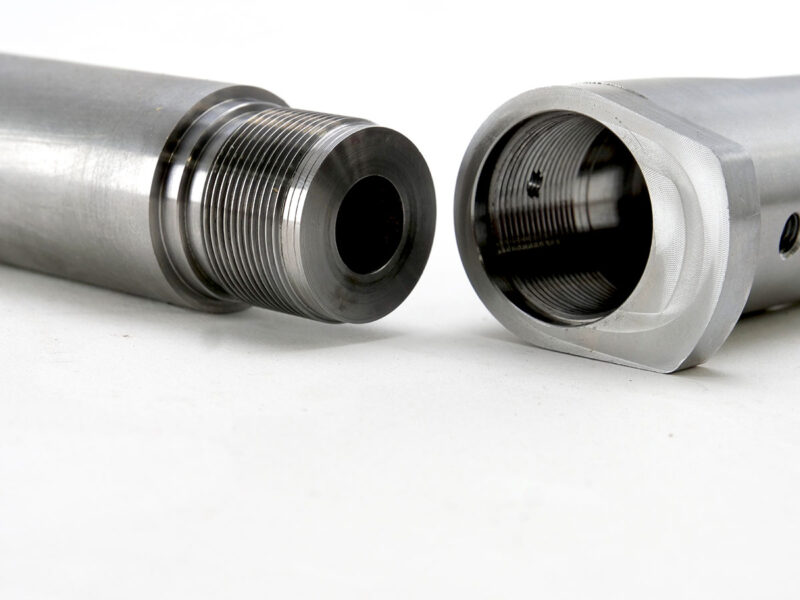
The front receiver ring is specially cut with two mortises into which the specially turned barrel tenons mate perfectly via 20-pitch threads.
The sample rifle also came with a Nightforce NX8 2.5-20x50mm scope. Bright, sharp, precise, but even with ultralight Talley one-piece rings, this pushed overall weight from 6.5 pounds to 8.5 pounds. There’s two ways to look at this: you’ve compromised what could have been a light, quick, deadly accurate field rifle, or you spend the 2 pounds you saved with the light rifle on a super scope. Option is yours.
The final ingredient that makes the AllTerra Carbon unique is its guarantee. Not MOA accuracy. Not 1/2 MOA accuracy. An eye popping 1/4 MOA accuracy guarantee when using AllTerra’s custom loaded ammo. They’ll guarantee 1/2 MOA with select premium factory ammo, too. Either way, this rifle is shooting better than I can. While firing from a Stuckey portable bench in variable breezes flitting to 8 or 10 mph, I consistently punched 0.75- to 0.27-inch groups with Hornady Precision Hunter 143-grain ELD-X factory loads. Switching to the provided AllTerra handloads, same 143-grain bullet, my first three-shot group went 0.252-inch.
Were this a rifle I’d ordered and purchased, I would not be taking AllTerra up on its offer for a full refund after an unprecedented 90-day test period. No sir ma’am. This legitimate tack river would be riding the river with me.
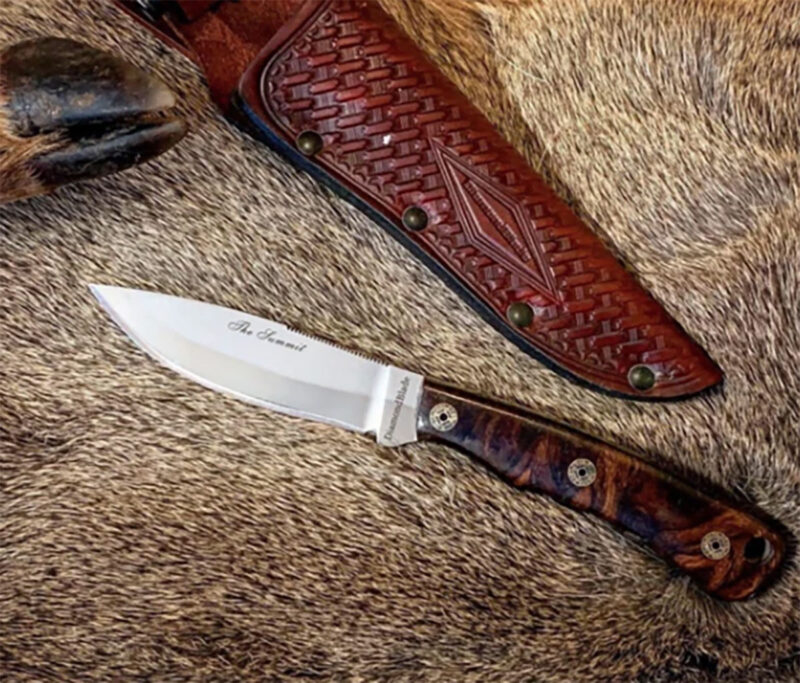 This beauty has curves in all the right places, to make field dressing a pleasure. Its design is absolutely inspired, fitting your hand as well as the job, so there is very little fatigue. Excellent choice for midsize and large game. his beauty has curves in all the right places, to make field dressing a pleasure. Its design is absolutely inspired, fitting your hand as well as the job, so there is very little fatigue. Excellent choice for midsize and large game. Buy Now
This beauty has curves in all the right places, to make field dressing a pleasure. Its design is absolutely inspired, fitting your hand as well as the job, so there is very little fatigue. Excellent choice for midsize and large game. his beauty has curves in all the right places, to make field dressing a pleasure. Its design is absolutely inspired, fitting your hand as well as the job, so there is very little fatigue. Excellent choice for midsize and large game. Buy Now
